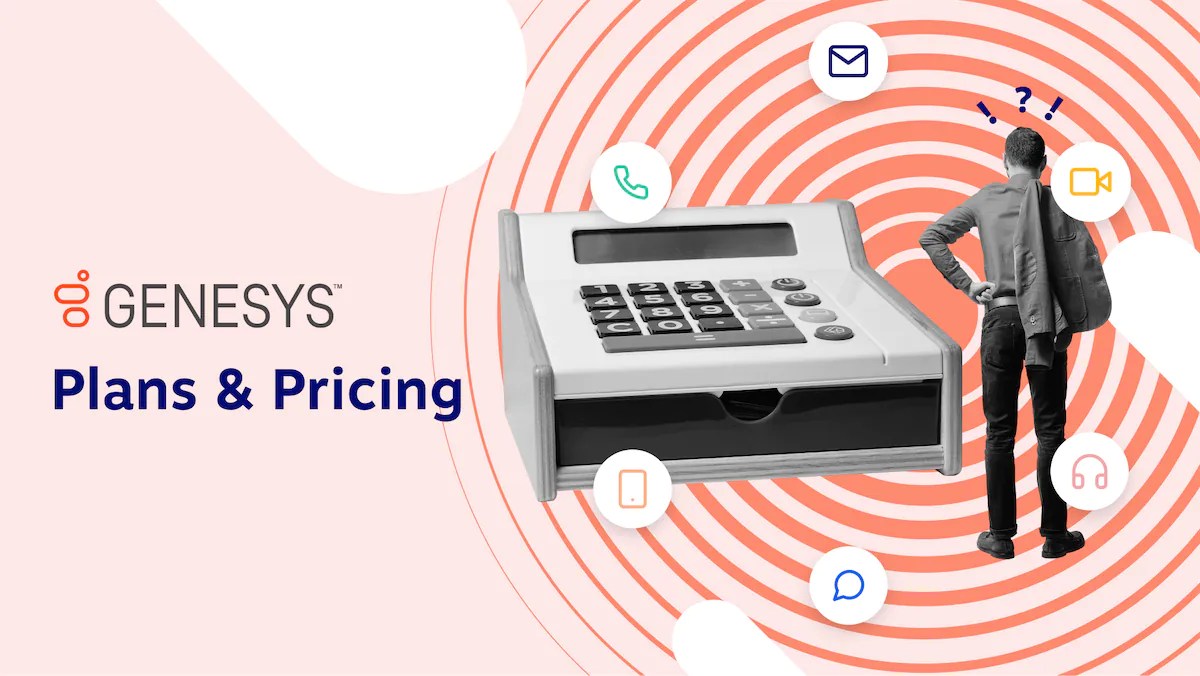Customer experience has never been more critical — or more complex. As artificial intelligence (AI), automation, and evolving customer expectations reshape the landscape, businesses must rethink their approach to customer service.
The future isn’t just about faster response times or more support channels (though those certainly matter). It’s also about creating smarter, more predictive, and seamless service experiences.
Customer expectations are at an all-time high, with 96% of CX leaders saying their executive teams now see CX as a key driver of business success. While there are a number of factors that contribute to strong CX, many businesses are clearly struggling to adapt to the new practices and technology needed to keep up.
We know that seamless AI-to-human transitions are key, with 98% of companies saying this is critical to customer satisfaction. However, a whopping 97% also self-report that they struggle to implement AI effectively.
Take the AI Maturity Assessment
In just 5 minutes, get your personalized score and recommendations to move forward with AI.
Let’s explore what’s next for customer service. We’ll dive into the trends, technologies, and strategies defining CX in 2025 and beyond so you can start adapting now.
The Customer Experience Landscape Is Changing
The customer experience landscape has changed in two key ways:
- Customer expectations are higher.
- AI is changing the face of customer service, with sometimes mixed results.
Why customer expectations are higher than ever
We’re currently in the “always-on” digital economy thanks to the rise of on-demand services like Amazon, Uber, and Netflix. Customers are accustomed to immediate responses and real-time interactions, and they expect the same level of speed and convenience in customer service. One study found that customers expected an email response in two and a half hours or under and a phone response in nine minutes or less:

Customers don’t just have high expectations for response times as they communicate with brands across different platforms. Whether they message you through your website, ping you on social media message apps, shoot over an email, or make a phone call, they expect a consistent and seamless experience.
Omnichannel support is so important that 56% of companies increased their investment in social channels to meet current customer expectations. Brands need to find ways to personalize customer experiences while providing seamless support across all channels — this requires holistic CX platforms.
The expectation for a personalized customer experience is also increasing. A 2024 study found that 81% of customers prefer to purchase from companies that offer a tailored experience, with 70% of respondents saying a personalized experience where the agent knows their history (including their purchase history and past customer service interactions) with the company is important.
Companies that fail to meet customer expectations risk losing market share to those that succeed.
The AI revolution in customer service
AI is no longer a futuristic concept. It’s actively shaping how companies interact with their customers.
Our 2025 State of CX report found that 92% of companies have already implemented AI in some capacity for customer service, with 68% using it for basic automation and 37% expanding its use across multiple areas.

AI benefits both organizations and their customers. It can reduce agents’ workloads, improve operational efficiency, prevent agent burnout, and cut costs. Most importantly, when implemented correctly, it often creates stronger customer experiences, improving response times and personalization.
Many CX leaders know that investing in AI-based technology is essential for their campaigns, but our report still found that some are struggling to implement it. Many leaders cited data accessibility and integration as their most significant challenge in making their AI efforts successful.
What the Future of Customer Service Looks Like
As customer service expectations continue to increase, brands of all sizes are finding ways to prioritize better customer experiences.
Three new technologies (or newly advanced technologies) will play a critical role in helping brands deliver: AI-powered support, predictive customer service features, and all-in-one contact center solutions.
AI-powered support with a human touch
Unsurprisingly, one of the most significant customer service trends right now is AI implementation. You can currently use AI for the following purposes:
- Conversational AI can be used to offer self-service support options to customers.
- Workflow automation can reduce time-consuming repetitive tasks.
- Data analysis like customer sentiment analysis can help you assess and optimize your CX performance.
It’s important to stress that while AI can improve efficiency, it will never fully replace the human connection. To be effective, it must be balanced with a human touch. For example, self-service options like AI-powered chatbots are a great option for handling basic customer inquiries, but some questions are too complex for bots and will require a human support agent.

Businesses that successfully integrate AI with human agents are likely to see higher customer satisfaction and retention.
Predictive customer service
The future of CX isn’t just reactive — it’s predictive. AI-powered analytics and other tools like sentiment analysis can anticipate customer needs before they arise based on the conversations your customers are having with reps and overall performance data.
These analytics can make recommendations or even personalize call scripts in real time based on the caller’s past purchase and interaction history. They can also help you identify customers at risk for churn so you can intervene before they’re gone for good.
Predictive analytics allows companies to identify and thus offer proactive solutions, which can be vital in reducing customer churn and increasing brand loyalty.

The contact center of the future
The traditional call center is evolving into a proactive, AI-driven customer experience hub.
Companies are moving away from reactive customer support to more predictive and personalized service. The goal is to identify issues before they impact too many customers, offering solutions upfront as a key part of the customer journey management strategy.
As AI-driven insights are enabling customer service teams to resolve issues faster, reduce agent workload, and improve service quality, they’ll become increasingly vital in the coming years. Many organizations are already relying heavily on AI call center software to level up their CX, and more will follow suit.

The Rise of Self-Service and Automation
While the human touch will always be critical to delivering top-tier customer support, it’s clear that self-service and automation will play vital roles, too.
Self-service options are fast, convenient, and appreciated by customers. Our report found that 59% of customers prefer to resolve issues without speaking to a customer service agent, opting instead for self-service options like chatbots, AI-powered FAQs, and knowledge bases when available.
Generative AI and next-generation chatbots are particularly important in the future of CX. This technology is transforming customer interactions, making chatbots more conversational and intelligent.

Chatbots can understand customer intent, provide relevant responses, and implement escalation management strategies when needed. They also leverage machine learning to assess what type of responses lead to positive outcomes, and they optimize their responses accordingly to offer better customer service.

Our report found that 39% of companies are already using generative AI for writing customer responses, with another 26% planning to adopt it in the future.
Businesses that invest in better self-service tools will reduce agent workload, freeing up more of their time to handle complex issues that actually need their attention. This helps all customers get the level of support they need faster.
The Role of Customer Data in Driving Better Experiences
CX leaders often struggle with data silos, critical customer information, customer service processes, and even support channel functionality spread out across too many tools.
Data silos make it harder for brands to offer unified customer service experiences. For example, a customer may start an interaction on social media and then later have to rehash their entire experience when they follow up via phone.
Data silos can also prevent personalization at scale. If you aren’t able to review a customer’s preferences and past interactions, your team will follow the same playbook time and time again, which can be frustrating for customers with high expectations.
This is a significant issue, with our report finding that 86% of companies using multiple CX tools said they had fragmented data. This impacts AI’s ability to deliver accurate insights and personalization at scale.
Many companies are therefore turning to unified, omnichannel contact center platforms with AI-powered solutions — preferring those that already integrate with their existing CRM. These solutions will collect and analyze all customer data in a single platform, providing real-time and proactive suggestions that allow for true personalization at scale.
Social Media, Calls, Messaging, and the Omnichannel Shift
Long gone are the days of entirely phone-based customer support.
Customers now expect you to offer support wherever they already are. That includes social media, messaging apps, email, live chat, and phone. If you aren’t offering omnichannel customer service on their preferred platform, it can impact their buying decisions.

Our report found that 56% of companies are now increasing investments in social media as a CX channel to keep up with customer demands. This includes scaling up their social media support efforts and leveraging AI-powered routing to ensure that customers are directed to the right channel and agent based on their needs.
Customers should have a seamless experience, even as they move between support platforms. This is critical in today’s CX landscape.
Metrics That Define Great Customer Service in 2025
It’s always important to track key performance indicators that align with your immediate and long-term business objectives. In general, however, these are often the most important customer service metrics:
- Customer satisfaction score (CSAT)
- First contact resolution rates
- Average response times
- Net promoter score (NPS)
- Call handling times
- Customer effort score
- First response time (FRT)
- Average handle time
It’s important to compare your metrics against customer feedback, business objectives, and industry standards. For example, if customers report that they’re receiving good support but that it’s taking multiple interactions to resolve basic issues, you may need to provide agents with the tools they need to resolve issues independently without escalation to managers.
Remember to monitor all your metrics holistically. A quick FRT is outstanding — but it will be frustrating to customers if they aren’t directed to the right person right from the beginning and have to be transferred to the correct department one or more times. Consider the overall customer journey and how to improve their experience.
AI-powered customer service reduces handling times and increases first-contact resolution rates. This, in turn, can reduce the amount of effort that customers put into resolving issues, which improves their overall satisfaction rates.

Future-Proof Your Customer Service With Nextiva
The future of customer service isn’t just about automation — it’s about creating intelligent, connected experiences that anticipate customer needs, streamline interactions, and foster long-term loyalty. And this isn’t just a “nice to have” — it’s a powerful key differentiator that will determine who customers choose to buy from.
Businesses must embrace AI, automation, and data-driven strategies to stay ahead in an increasingly competitive landscape. But to actually improve CX, they also need to implement these strategies correctly (and alongside careful human touch!).
A truly future-proof customer service strategy requires an omnichannel contact center that unifies phone, chat, email, social media, and messaging apps into a seamless, data-driven ecosystem.
With the right platform, businesses can:
- Deliver real-time, personalized service across all customer touchpoints.
- Ensure seamless AI-to-human transitions so customers never feel lost in automation.
- Leverage predictive analytics to anticipate needs and proactively resolve issues.
- Increase response times while improving operational efficiency and still preventing agent burnout.
Companies that invest in omnichannel, AI-powered customer service solutions today will be industry leaders tomorrow. So now, it’s up to you: Are you ready to redefine your CX strategy?
If you are, we’re ready to help. Check out our AI-powered contact center solution today.
Top AI-Powered Contact Center Solution
Transform your customer interactions with a contact center that boosts agent productivity.

















 Customer Experience
Customer Experience 









